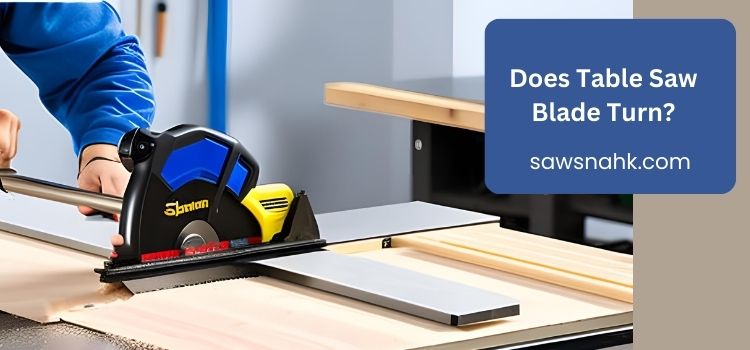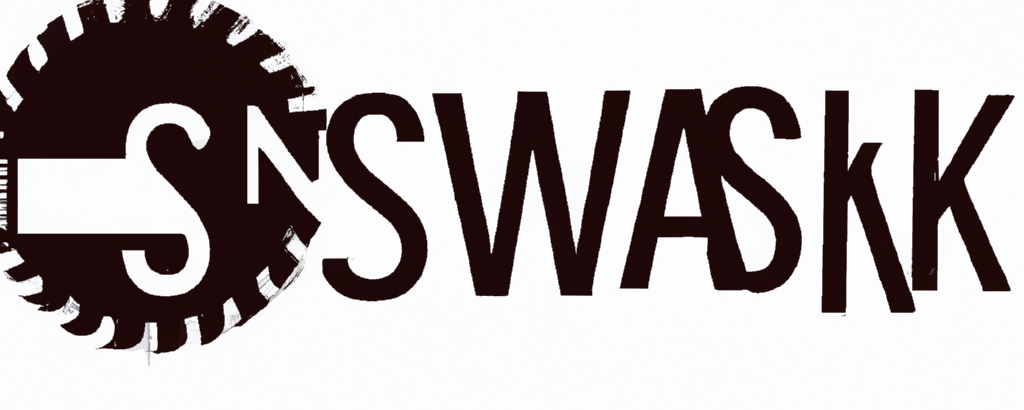Does Table Saw Blade Turn?

Table saws allow woodworkers to cut materials with precision and accuracy. Understanding the direction of the blade is an essential part of using a table saw.
Does table saw blade turn? Yes, a table saw blade turns. Table saw blades rotate clockwise towards the front of the table.
This blog will explain why the table saw’s blade turns toward the operator. We’ll also discuss the impact this has on the cutting performance and answer frequently asked questions about blade direction.
Why Does the Table Saw Blade Turn Towards the Operator?
In the world of woodworking, the table saw holds a significant place. With its swift, spinning blade, it’s the go-to tool for precision cuts. Have you ever wondered, though, why does the table saw blade turn towards the operator? Let’s unravel this mystery and explore the reasons behind this peculiar, yet strategic design.
Table saw blades are specifically designed to rotate in a certain direction for two main reasons – enhancing cutting efficiency and promoting safety. The teeth of the saw blade are angled in a manner that allows them to cut into the wood while the blade revolves forward. This design ensures that the act of cutting draws the workpiece towards the table and the fence, thereby minimizing kickbacks and increasing the accuracy of the cut.
Advantages of a Table Saw Blade Facing the Operator
The orientation of the table saw blade offers several notable benefits.
Improved Control Over the Workpiece
When the blade turns towards the operator, it facilitates enhanced control over the cutting process. The rotation of the blade pulls the material towards the table, requiring less force from the woodworker. This results in more accurate and smoother cuts.
Reduced Kickback Risk
Kickback is a hazardous occurrence where the workpiece is propelled towards the operator while cutting. By turning the blade towards the operator, the risk of kickback is significantly reduced. The design prevents the workpiece from being thrown backwards, enhancing safety.
Cleaner and Smoother Cuts
The correct rotation of the blade ensures that the teeth effectively engage with the material. This interaction leads to cleaner and smoother cuts – a critical factor for woodworking projects that demand precision.
Conclusion:
Understanding the direction of the blade rotation is crucial for optimizing the performance of your table saw and creating a safer woodworking environment. When the blade is turned towards the operator, woodworkers can better control their cuts, reduce the potential for kickbacks, and produce cleaner results.
Remember, a table saw is a powerful tool, and with power comes responsibility. Always adhere to safety measures while operating such equipment. Happy woodworking!
FAQs:
Can I use a table saw that rotates the blade in the opposite direction to the one it normally does?
As the manufacturer instructed, using the table saw with the blade rotating correctly is important. The blade can cause unsafe cutting conditions and kickback hazards.
Can I use a blade for a table saw with teeth oriented reversely?
It is not recommended to use a blade with reversed tooth orientation. It is not recommended to use a knife that has changed tooth orientation. The blade’s teeth were designed to only cut in one direction.
Why is it essential to unplug the power when changing blades or making adjustments?
Disconnecting the table saw’s power when changing blades or making adjustments ensures safety. This prevents accidents and reduces potential injuries when handling the blade or making adjustments.
